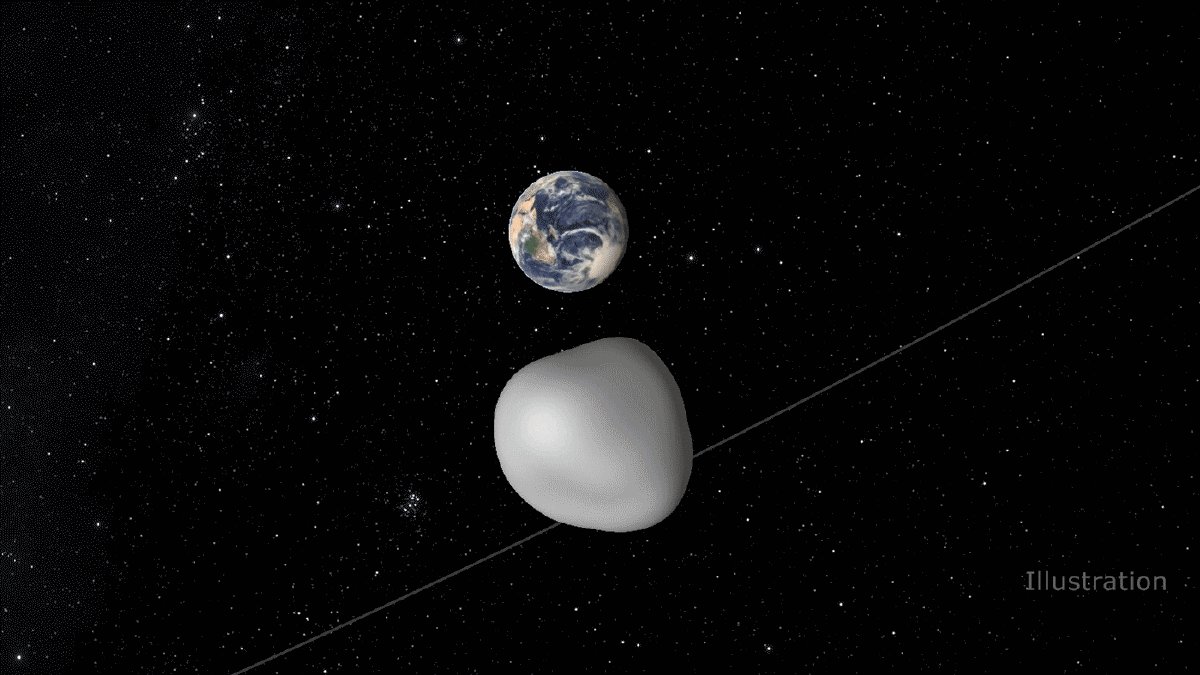
An asteroid measuring between 30 feet and 100 feet is set to pass Earth on October 12 at a distance of 27,000 miles—about an eighth of the distance to the Moon. This makes it one of the largest close approach asteroids to brush past Earth this year, and presents NASA with a valuable opportunity: To test out its planetary defense systems.
The asteroid, named TC4, was discovered in 2012 and scientists have been tracking it ever since—until recently, it was thought TC4 could come within 4,200 miles from Earth's surface.
However, scientists at the European Space Agency have now made the first direct observations of the object. These new views of the asteroid have allowed experts at NASA's Center for Near-Earth Object Studies (CNEOS) to refine its orbit and the distance at which it will make its closest approach. The asteroid is currently travelling at a speed of 30,000mph and while it appears very dim at the moment, it will get brighter as it gets closer.
The space agency, along with astronomers from the International Asteroid Warning Network, are currently planning to use TC4 as an exercise to test out the "recovery, characterization and reporting" of a potentially hazardous object approaching Earth—it allows them to try out the planetary defense systems they have been developing over the last few years.

Michael Kelley, who is leading the TC4 observation campaign, said in a statement: "Scientists have always appreciated knowing when an asteroid will make a close approach to and safely pass the Earth because they can make preparations to collect data to characterize and learn as much as possible about it. This time we are adding in another layer of effort, using this asteroid flyby to test the worldwide asteroid detection and tracking network, assessing our capability to work together in response to finding a potential real asteroid threat."
Scientists plan to test a network of observatories that have been set up as an asteroid warning system—being able to try this out on an asteroid that is coming so close to Earth will allow them to refine the network and the techniques used to track near Earth objects.
"This is the perfect target for such an exercise because while we know the orbit of 2012 TC4 well enough to be absolutely certain it will not impact Earth, we haven't established its exact path just yet," said Paul Chodas, manager of the CNEOS at NASA's Jet Propulsion Laboratory. "It will be incumbent upon the observatories to get a fix on the asteroid as it approaches, and work together to obtain follow-up observations that make more refined asteroid orbit determinations possible."
Uncommon Knowledge
Newsweek is committed to challenging conventional wisdom and finding connections in the search for common ground.
Newsweek is committed to challenging conventional wisdom and finding connections in the search for common ground.
About the writer
Hannah Osborne is Nesweek's Science Editor, based in London, UK. Hannah joined Newsweek in 2017 from IBTimes UK. She is ... Read more
To read how Newsweek uses AI as a newsroom tool, Click here.








